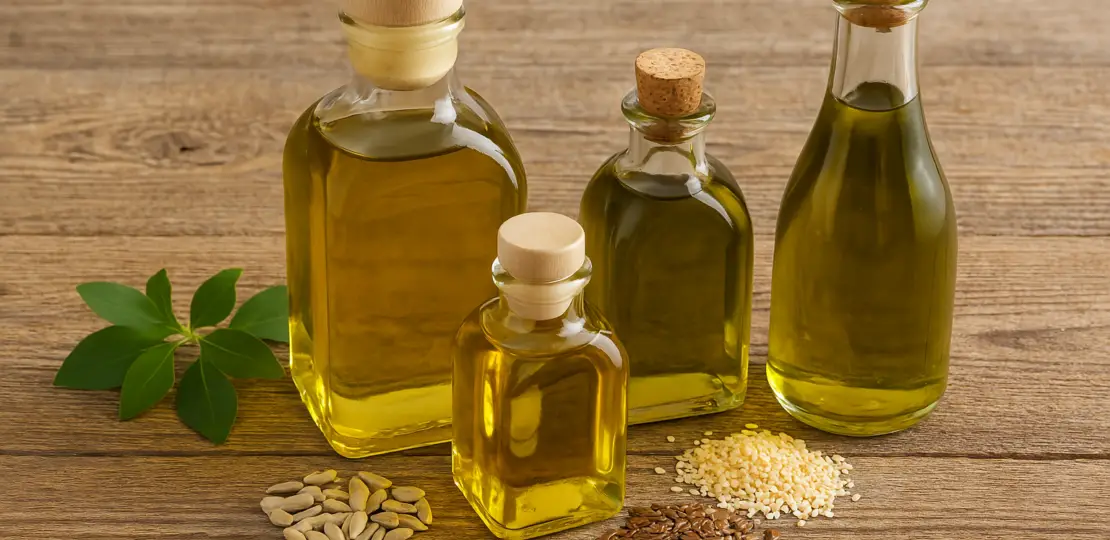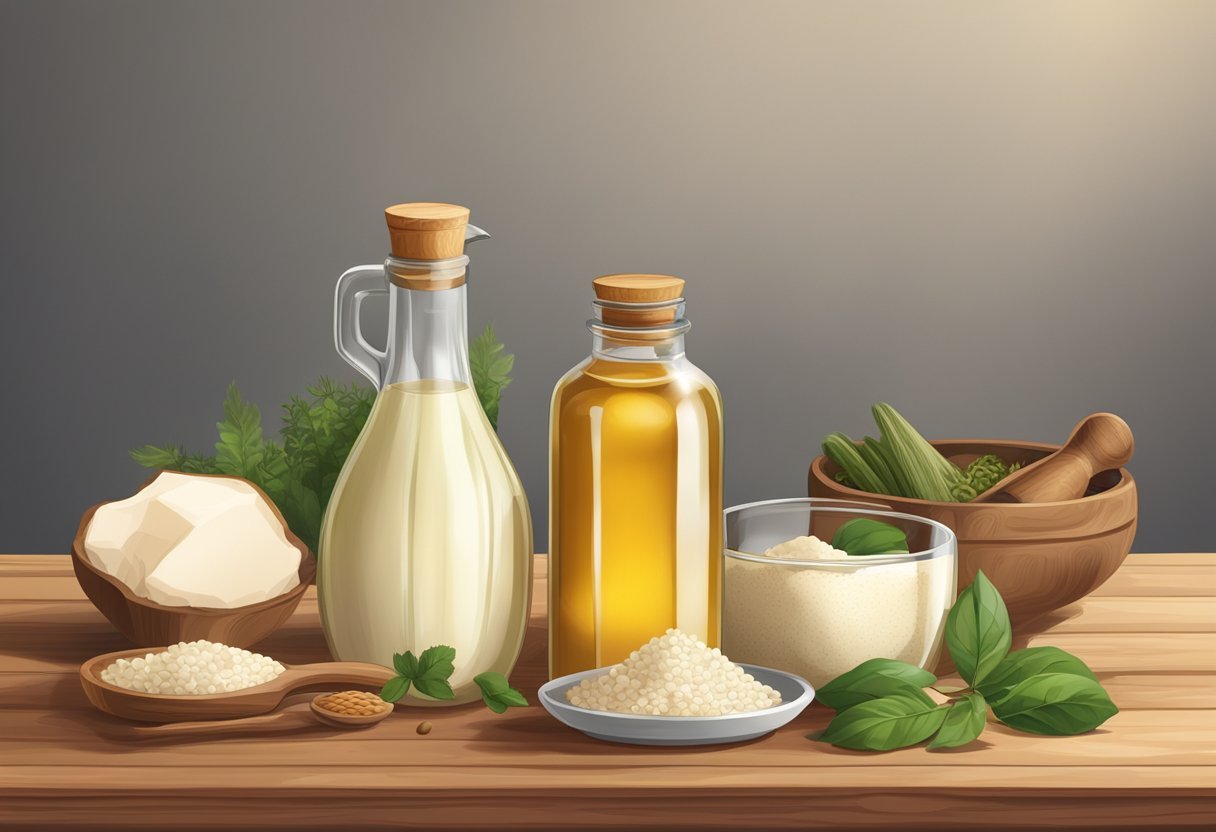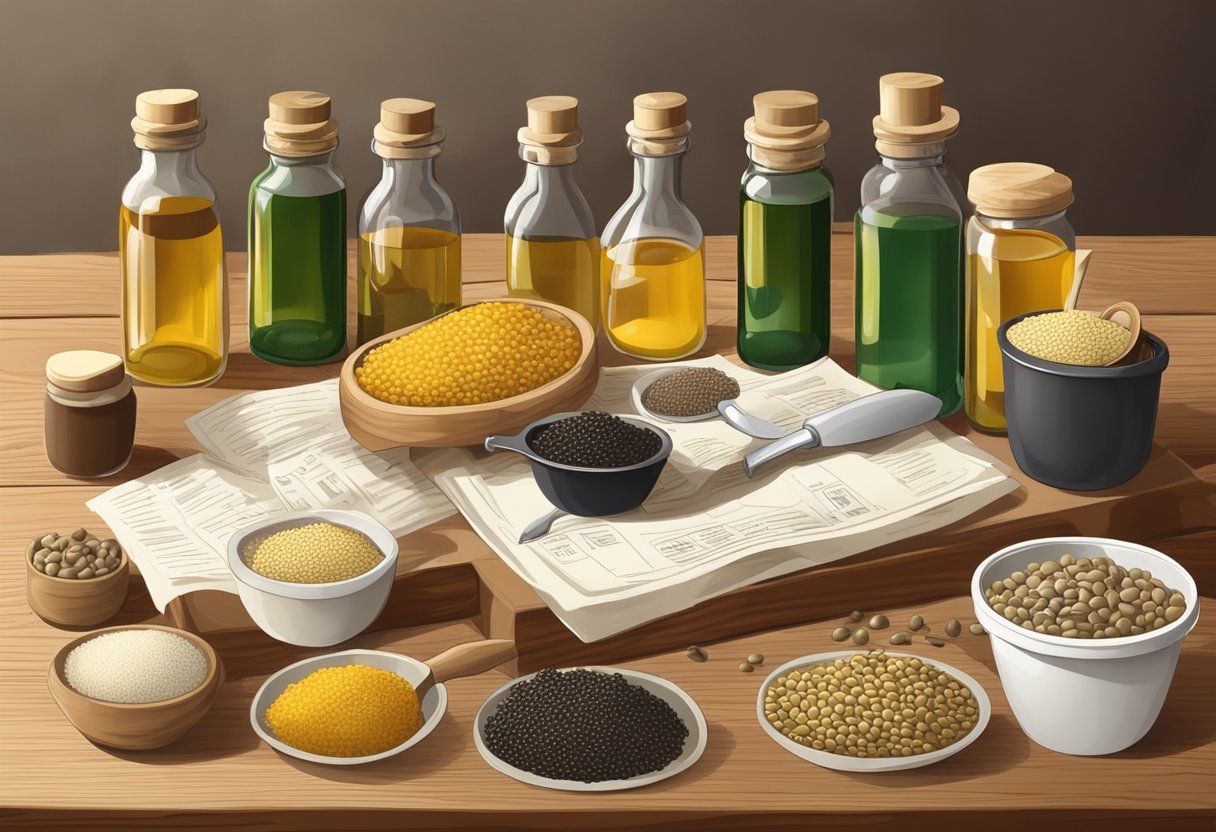Embracing Tallow Cooking: A Return to Healthier Traditions
March 29, 2025 | by iprittie@gmail.com

The debate between animal fats and seed oils has heated up — especially when it comes to high-heat cooking. Is tallow better than seed oils? Let’s compare the cooking benefits of tallow with modern vegetable oils and see which truly supports your health and flavor goals.
Tallow, rendered from beef fat, offers stability at high temperatures and contains vitamins D and choline. Meanwhile, seed oils like canola and sunflower are known for their vitamin E and K content.

Both options have their place in different cooking methods and dietary approaches. The smoke point advantage of tallow makes it practical for high-heat cooking, while the unsaturated fat profile of most seed oils aligns with current mainstream dietary recommendations for heart health…if the ‘mainstream’ opinion can be trusted.
Key Takeaways
- Beef tallow offers high heat stability and contains vitamins D and choline, while seed oils provide more vitamin E and K.
- Individual cooking needs, dietary preferences, and health conditions should guide the choice between tallow and seed oils in daily use.
- Tallow may be the best cooking fat for high heat due to its high smoke point and resistance to oxidation.
Understanding Fats

Fats play essential roles in our bodies and in the foods we eat. The differences between fat types affect everything from shelf stability to health impacts, with some supporting bodily functions while others potentially causing harm.
Explore how ditching seed oils can transform your athletic performance and recovery.
Types of Fatty Acids
Fatty acids are classified into three main categories: saturated, monounsaturated, and polyunsaturated fats. Each type has different chemical structures and health effects.
Saturated fats have no double bonds between carbon atoms and are typically solid at room temperature. They’re found in animal products like beef tallow and some plant oils like coconut oil.
Monounsaturated fats contain one double bond and are usually liquid at room temperature but may solidify when refrigerated. Olive oil is a common example.
Polyunsaturated fats contain multiple double bonds and remain liquid even when cold. Seed oils like soybean, corn, and sunflower oils fall into this category. These include essential omega-3 and omega-6 fatty acids that our bodies cannot produce.
Trans fats, mostly artificial and created through hydrogenation, are particularly harmful to health and now limited in many food supplies.
Role of Fats in Human Health
Fats are vital for numerous bodily functions. They provide energy, support cell growth, protect organs, and help absorb certain nutrients.
Different fatty acids affect health in various ways. Research shows that replacing saturated fats with unsaturated options generally improves heart health markers. Polyunsaturated fats, especially omega-3s, reduce inflammation and support brain function.
However, the debate continues about which cooking fats are healthiest. While traditional advice favored vegetable oils over animal fats like tallow, recent research has provided more nuanced findings.
The balance of different fatty acids matters significantly. Most Western diets contain excessive omega-6 compared to omega-3 fatty acids, potentially contributing to chronic inflammation and related diseases.
A Closer Look at Tallow

Beef tallow has gained renewed attention in recent health discussions, particularly regarding its fat composition and nutritional properties. This traditional animal fat has distinct characteristics that set it apart from modern processed oils.
Health-conscious cooks are increasingly turning to grass-fed beef tallow for cooking, as it provides a stable, nutrient-rich alternative to refined seed oils. Its natural fat profile and lack of processing appeal to those seeking whole-food ingredients.
What Is Beef Tallow?
Beef tallow is a rendered form of beef fat that’s solid at room temperature. It’s made by slowly melting down the fatty tissue from around the kidneys and loins of cattle, then straining out the impurities. The result is a smooth, white, shelf-stable cooking fat.
Historically, beef tallow was a kitchen staple before vegetable oils became widespread in the 20th century. Many fast-food restaurants even used beef tallow for frying until the 1990s when concerns about saturated fat led to changes.
Tallow contains approximately 50% saturated fat, 42% monounsaturated fat, and 4% polyunsaturated fat. This composition makes it extremely stable for high-heat cooking with a smoke point of about 400°F (204°C).
Ready to embrace traditional fats? Discover the truth behind tallow’s heart health benefits.
Nutritional Profile
Beef tallow offers several nutrients beyond just its fatty acid profile. It contains vitamin D, choline, and cholesterol – compounds that play important roles in hormone production and cellular function.
The fat composition in tallow includes:
- Saturated fats: primarily palmitic and stearic acids
- Monounsaturated fats: primarily oleic acid (the same found in olive oil)
- Natural trans fats: including conjugated linoleic acid (CLA)
Beef tallow from grass-fed cattle typically contains higher levels of omega-3 fatty acids and CLA compared to grain-fed sources.
Unlike heavily processed oils, tallow contains minimal additives and undergoes minimal industrial processing, which appeals to those seeking less refined food options.
Seed Oils in Depth

Seed oils come from various plant sources and offer different nutritional profiles. They contain unique fatty acid compositions and varying amounts of beneficial compounds that impact health differently than animal fats.
Different Types and Uses
Seed oils encompass a wide variety of plant-based oils extracted from seeds. Common types include sunflower, canola, soybean, corn, and flaxseed oils.
Each type has distinct properties and applications:
- Sunflower oil: Light flavor, high smoke point, ideal for frying and baking
- Canola oil: Neutral taste, versatile for cooking and baking
- Flaxseed oil: Rich in omega-3 fatty acids, but not suitable for high-heat cooking
Most seed oils undergo processing methods that can influence their final nutritional value. Cold-pressed oils typically retain more nutrients than heavily refined versions.
Food manufacturers widely use seed oils in packaged products due to their stability, cost-effectiveness, and neutral flavors. They serve as staples in commercial food production and home kitchens alike.
Seed Oil Alternatives for Frying
For those concerned about the effects of highly processed oils, seed oil alternatives for frying include beef tallow, coconut oil, and ghee. These traditional fats are more stable and less likely to form harmful byproducts at high temperatures.
Nutritional Value of Seed Oils
Seed oils provide essential fatty acids the body cannot produce on its own. Many plant-based oils contain vitamin E and vitamin K, which support various bodily functions.
The fatty acid composition varies significantly between different seed oils:
| Oil Type | Omega-3 | Omega-6 | Vitamin E |
|---|---|---|---|
| Flaxseed | High | Low | Moderate |
| Sunflower | Low | High | High |
| Canola | Moderate | Moderate | Moderate |
However, the ratio of omega-6 to omega-3 fatty acids in many seed oils is higher than what’s considered optimal. This imbalance has prompted discussions about potential inflammatory effects.
Comparative Health Impacts

The dietary fats we choose impact our bodies differently. Research shows beef tallow and seed oils affect heart health, inflammation levels, and overall disease risk through distinct biological mechanisms.
While seed oils are marketed as heart-healthy, emerging studies and anecdotal evidence raise questions like, “is canola oil bad for you?” This debate underscores the need for balance and transparency in fat consumption.
Inflammation and Disease Prevention
The omega-6 to omega-3 ratio in dietary fats plays a crucial role in inflammation regulation. Most seed oils contain high amounts of omega-6 fatty acids, which some research suggests may promote inflammation when consumed in excess.
Chronic inflammation is linked to numerous health conditions including heart disease, diabetes, and certain cancers. This connection raises concerns about potential health risks associated with overconsumption of certain seed oils.
Tallow contains a more balanced fatty acid profile. Some studies indicate that naturally occurring animal fats may trigger less inflammatory response than highly processed seed oils.
Cooking and Stability
When choosing cooking fats, stability during heating and storage significantly impacts both flavor and health benefits. Different fats behave differently in your kitchen, affecting everything from cooking performance to how long they last on your shelf.
Smoke Points of Fats and Oils
Smoke point refers to the temperature at which fats begin to break down and smoke. Beef tallow has a relatively high smoke point of 400°F (204°C), making it a great choice for high-heat cooking methods like frying and searing. This stability means fewer harmful compounds form during cooking.
Seed oils vary in their smoke points. Refined sunflower and safflower oils can reach 450°F (232°C), while unrefined versions smoke at much lower temperatures around 225°F (107°C). This difference is crucial for cooking applications.
Olive oil has a moderate smoke point of 325-375°F (165-190°C) depending on whether it’s extra virgin or refined. Butter smokes at a lower 350°F (177°C), while lard performs similarly to tallow at about 370°F (188°C).
Higher smoke points generally indicate better stability during cooking, resulting in fewer potentially harmful compounds.
Shelf Life Considerations
Beef tallow remains stable at room temperature for extended periods without turning rancid, often lasting 6-12 months when properly stored. Its high saturated fat content provides natural resistance to oxidation.
Seed oils are more vulnerable to oxidation due to their polyunsaturated fat content. They typically require refrigeration after opening and may develop off-flavors within 3-6 months. Light, heat, and air exposure accelerate this deterioration process.
Olive oil offers intermediate stability, typically lasting 12-18 months when stored properly in a cool, dark place. Butter needs refrigeration but can be kept at room temperature for short periods. Lard, like tallow, has good shelf stability.
Proper storage matters for all fats. Airtight containers away from heat and light help maintain quality and prevent the formation of harmful compounds that can affect both taste and nutritional value.
Market Trends and Consumer Behavior
Consumer interest in beef tallow has grown significantly since 2020. Social media platforms and health influencers have contributed to this trend, with searches for “beef tallow benefits” increasing by over 70% on platforms like Yahoo.
The renewed interest in natural fats reflects a larger cultural shift toward natural fats vs processed oils, with consumers prioritizing whole-food ingredients and traditional preparation methods.
The cooking oil market reflects this shifting landscape. Specialty tallow products now appear in mainstream grocery stores. Consumers are more broadly being exposed to tallow as an option when they get their groceries.
Food manufacturers have responded by offering more diverse fat options. Some companies now produce foods with “avoids seed oils” claims to appeal to consumers concerned about industrial processing.
Consumer Choice and Health Claims
Animal fat producers market tallow as more natural and traditional. They point to tallow’s higher content of vitamin D and choline as selling points.
Going back to tallow embraces centuries of knowledge. Until the seed oil campaign in the 90s, tallow was understood to be a great choice for cooking.
FAQ
Q: Is beef tallow healthier than canola oil?
A: Beef tallow is more stable at high temperatures and contains fewer polyunsaturated fats than canola oil. While canola has more vitamin E, tallow is rich in vitamin D and cholesterol, which support hormone production.
Q: What are the best alternatives to seed oils for frying?
A: Beef tallow, ghee, coconut oil, and lard are stable fats that work well for frying and searing without breaking down at high temperatures.
Have questions or curious to learn more? We’d love to hear from you—reach out anytime through our contact page!
.
RELATED POSTS
View all



